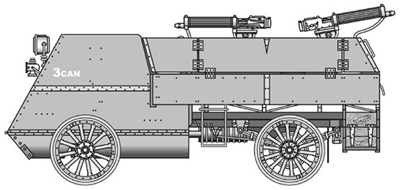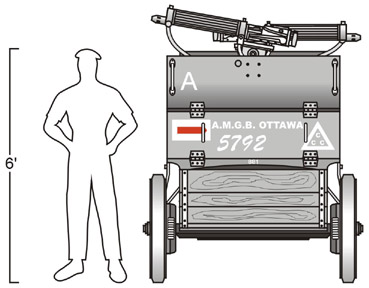
Shop Amazon - Create an Amazon Baby Registry
Armoured Autocar


|
Canada’s major contribution to the evolution of the armoured fighting vehicle in the First World War was the Armoured Autocar, the brainchild of French expatriate Raymond Brutinel. Initially armed with the Colt Model 1895 .30in ‘Potato Digger’ machine gun, the Autocar was originally envisioned as a machine gun carrier. In 1916 the Vickers .303in MG was substituted for the less than satisfactory Colts, and in the latter stages of the war, the cars were employed in the role of true armoured cars in the Allied advances of late 1918. | ||||||||||||||||||||||||
The machine guns were mounted centrally in the rear of the hull and protruded above the folding side plates. The forward two legged gun mount was bolted to the floor and the rear tripod mount was secured to a raised deck. The machine guns were surrounded by ammunition lockers which extended along both sides and across the rear of the hull. When folded down inside the vehicle, the upper side plates served as lids for these lockers. Even when the side plates were in their upright position, the gunners were still extremely exposed when manning their weapons. The front compartment of the hull was open-topped and the driver’s head was exposed above the hull itself. The lower front plate of the cab was hinged and could be raised to allow for better engine ventilation when necessary. A total of eight Armoured Autocars were built and the lone surviving car is on display at the Canadian War Museum in Ottawa, Canada. |
|||||||||||||||||||||||||

|
|
||||||||||||||||||||||||

© Chris Johnson, 1997-2002
Index

